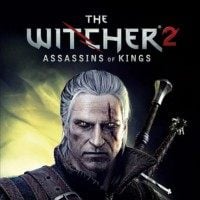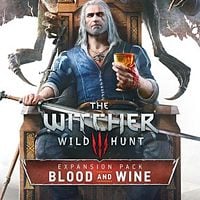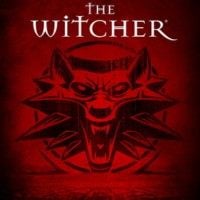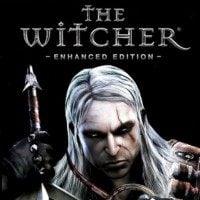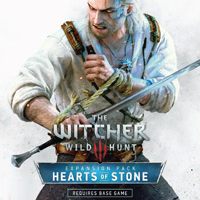Behind the scenes of The Witcher trilogy with CD Projekt RED
Digital Dragons in Cracow gathered top Polish video game developers. We took this chance to talk with some members of CD Projekt Red (both their current and former employees) about the Witcher series and some behind-the-scenes mysteries.
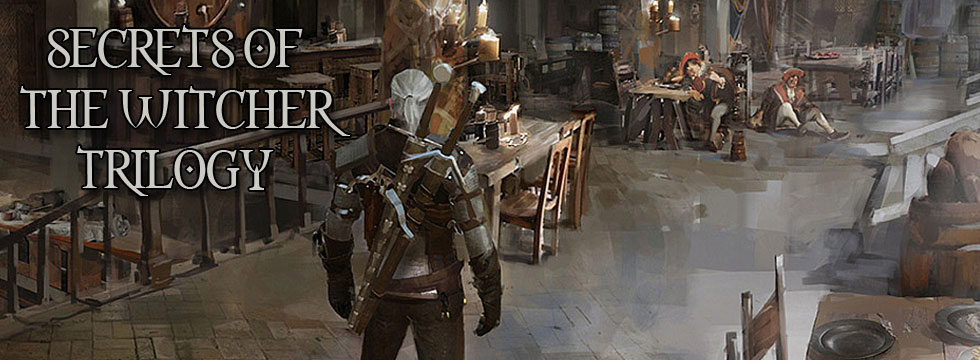
I’m fully aware that a lot has been already said and written on the Witcher video game series, and especially on its third installment. We’ve been told about the secrets behind the development of the games, about various nods and shoutouts hidden within, and things that were supposed to be included in the story, but in the end weren’t. But does this mean that the topic has been exhausted and there’s nothing more interesting left to discover? Certainly not! Welearned that during the latest Digital Dragons conference in Krakow, Poland, where we had the chance to talk to several CDPR employees – both current and former. We had three quest designers answering our questions about various plot related matters – Artur Ganszyniec, Pawel Sasko, and Blazej Augustynek.
What we got is a timeline of sorts, on which we were able to follow the evolution of the entire series, as seen from behind the scenes, through a series of trivia. We invite you on a journey following the history of CD Projekt RED – except this time you’ll be going via the backstage scenic route. A fair warning though – you will encounter many a spoiler before you reach the end of this article.
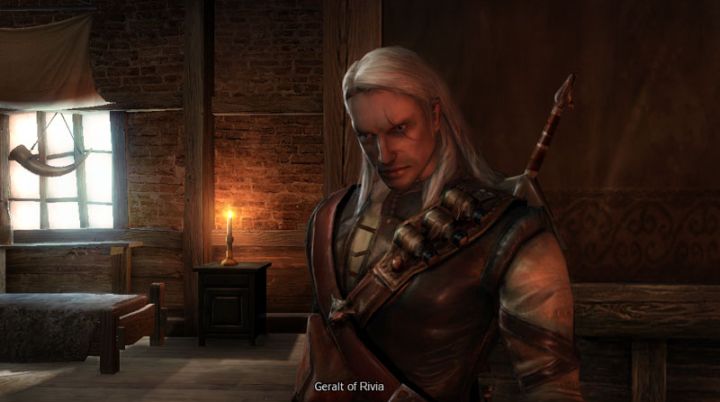
Moderation is the key to success – The Witcher
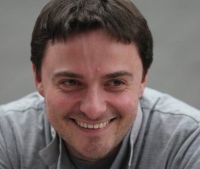
Artur Ganszyniec – his career in the industry began with the first Witcher, on which he had worked as a story (quest) designer as well as game designer. He parted ways with CD Projekt RED before the release of The Witcher 2 (on which he worked as well), and is currently pursuing his ambitions in 11 bit Studios, where he became the lead of a yet unannounced project that will be released after Frostpunk. He’s also worked on the popular RPG system Wolsung.
I suppose many of you share my view on this – the strength of the first Witcher lays in its cosy setting. It was a large-scope story packed into a small area, limited to the city of Vizima and its surroundings. Despite that, CDPR not only avoided monotony and lack of variety (something which BioWare failed at with their Dragon Age II), but they were also able to use this “minimalism” to their advantage, setting the right tone for the entire adventure.
You might be surprised to hear, though, as revealed by Artur Ganszyniec, that the initial premise of the project was vastly different. The developers planned to expand the action to a much larger area, and send Geralt much much further away from home (“far south”) at some stage of the story. Additionally, many more NPCs were to cross paths with the White Wolf. For example, each chapter of the story was to feature a different Scoia’tael commander (Yaevinn would be just one of them), and a certain fence from Vizima Temple Quarter as well as a certain head of Temerian intelligence used to be two different persons, before they came to be known simply as the character Thaler.
So, what prompted the devs to release the game in the form we eventually got? The answer is simple – time and money. At some stage of development, the team calculated that the creation of all the planned locations and character models would end... roughly two years after the intended release date. Faced with this fact, the team needed to condense the content. Note – condense, not cut. The decision was made after the plot outline was presented to the mass media, so the team wanted to avoid turning the whole project upside down at that stage.
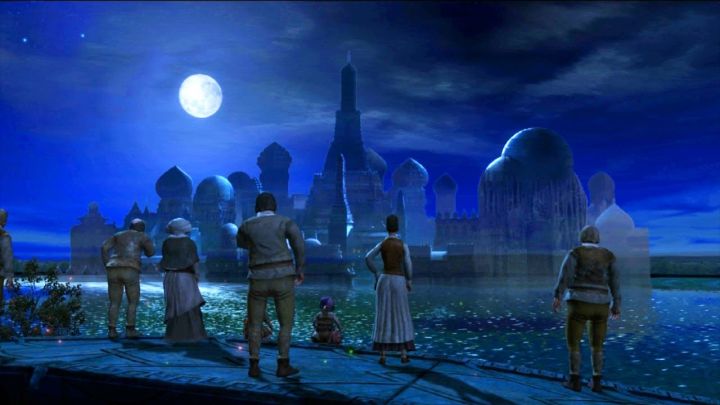
In the end, a significant portion of the story was crammed into Vizima and its surroundings... and the “REDs’” saw the thing they had made and it was very good. They noticed that the cosy atmosphere had a positive influence on the story, and a limited number of fleshed out characters that appear throughout the entire adventure is a better solution than an army of discardable one-time use NPCs.
“When we were beginning the whole thing, there was probably no one in the entire company who knew how to do it properly”, admits Artur Ganszyniec. “We learned things on the fly, we had no professional writers. I myself am a data analyst (...) So you see, we were just a bunch of amateurs – and through our problems and issues [like the ones that were mentioned earlier – ed. note] we had to learn how to write stories in video games”.
When we think about it, it’s truly astonishing that the first Witcher turned out as good a video game as it did, especially in the narrative departament. And seeing what the studio achieved only 8 years later with The Witcher 3: Wild Hunt, the whole story begins to look like some kind of a fairytale. But hold on a minute – we were supposed to keep this chronological. Let’s move towards the Assassins of Kings then.
According to Artur Ganszyniec, CD Projekt RED had plans for a Witcher trilogy from the very beginning – as early as when they were making the first game. They even had drafts ready for the content of the next two games and their design outlines – in the end, the plans had to be scrapped, and the series followed a completely different direction. Unfortunately, Ganszyniec refused to share any more details concerning the would-be Witcher games.
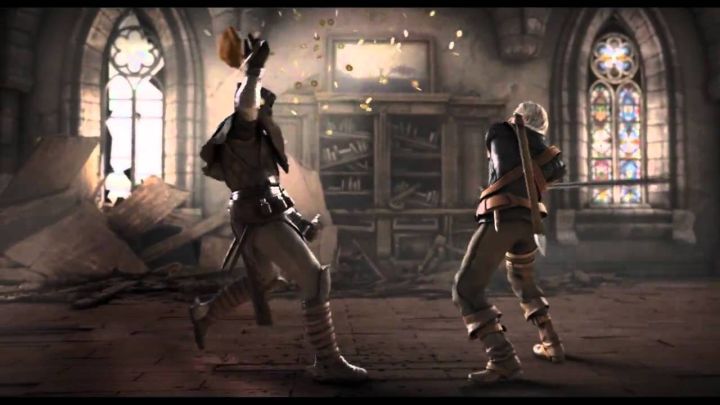
Yennefer vs. REDengine – The Witcher 2
Before we get to The Witcher 2 itself, we have to mention one, outstandingly important character, who was supposed to make an appearance in the series at the very beginning, but whose debut was postponed to the very last installment in the trilogy – Yennefer of Vengenberg. Contrary to what many people might assume, CD Projekt RED didn’t exclude her just to make room for Triss as “Geralt’s girl”. There were two reasons for not letting Yen into the party back in 2007. Firstly, the devs didn’t want to clutter the story with plot threads that would be understandable only for people familiar with the books. The studio recognized that Sapkowski’s universe was quite complex itself, and that engaging the players in the convoluted and contradictory relationship between the witcher and the sorceress could have made the whole story quite incomprehensible. The other reason is much more trivial: there were not enough resources to develop a 3D model, or pretty much anything else, for Yennefer.
But what about the sequel? Why was there no Yen (preferably together with Ciri) in The Witcher 2? The answer for this is underpinned by the broader context of the development of Assassins of Kings. According to Artur Ganszyniec, the second part was being developed in great perils from the very onset. Subsequent ideas were discarded and thrown out of the window. Not to mention the idea of replacing the, shall we say “emeritus”, Aurora engine, with a proprietary one, now referred to as REDengine.
The new technology was as powerful as it was problematic. Harnessing it required increased effort from the whole team, and the story got sidetracked in consequence. In Ganszyniec’ opinion, the plot started heading in the wrong direction. Ultimately, after taming the capricious REDengine, the developers ended up with a game that told a very political story. So much, in fact, that there was little room left for Geralt’s personal threads – namely for introducing his daughter and lover figures. Not only that – there was hardly enough time to wrap the story up as it was; probably everyone who finished the game shortly after the release was surprised with how insubstantial the third act was. Let’s also remember that the game was being developed during the Great Recession, which considerably hampered the realization of more ambitious and creative ideas.
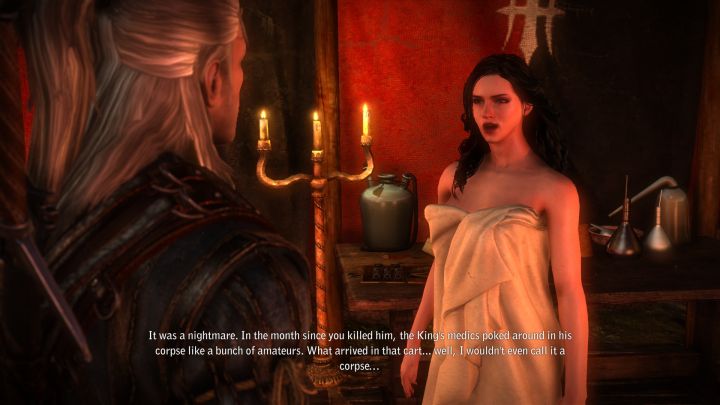
The Witcher 3
Exposure needed

Pawel Sasko – he was a designer and a writer in the, once pretty famous, studios: Metropolis Software and Reality Pump. He joined CD Projekt RED in 2012, where he worked on quests for The Witcher 3, which was still in its infancy back then. Today, he sports the title of chief quest designer, working on the much-anticipated Cyberpunk 2077.
There was no room for careless creativity and spontaneous changes in the script in the case of The Witcher 3. During the interview and his presentation at Digital Dragons in Kracow, Pawel Sasko emphasized that The Wild Hunt was a product of very precise planning; a project where, from the very beginning, hundreds of developers knew exactly what to do, what story they wanted to tell, what emotions to evoke and by what means. The right pace of the narration, a compelling mixture of scenes and events of various intensity, and translating that engagement into emotions – these are only a handful of guidelines that the team followed when designing the plot and the quests.
These guidelines were instrumental when the team had to decide what should and what shouldn’t be included in The Witcher 3. It’s because of them that the lamented Iorveth was ultimately not featured in the game – in spite of the initial plans and the relatively advanced stage of development of his threads. Similar fate met the Lodge of Sorceresses (particularly one Fringilla Vigo) and Avallac’h in the latter parts of the story. The same goes for Adda, who should theoretically accompany her husband – king Radovid (at least in the case of those players who managed to save her in the original Witcher).
”Characters such as Iorveth or Adda are what can be called keystone figures for the plot”, explains Sasko. “If you analyze books or movies, you will notice that many of them, especially the less ambitious ones, make a point of, for example, introducing characters of great, great gravity. These characters dominate the story; there’s a ton of things that you have to create ‘around them’, and suddenly, if you happen to have a couple of these central characters, it turns out that you either have to produce a doorstopper of a saga, or risk losing control over the story. It’s usually just an artistic decision. We simply cannot accept certain things, because they would be harmful for the game – and we wouldn’t let that happen”.
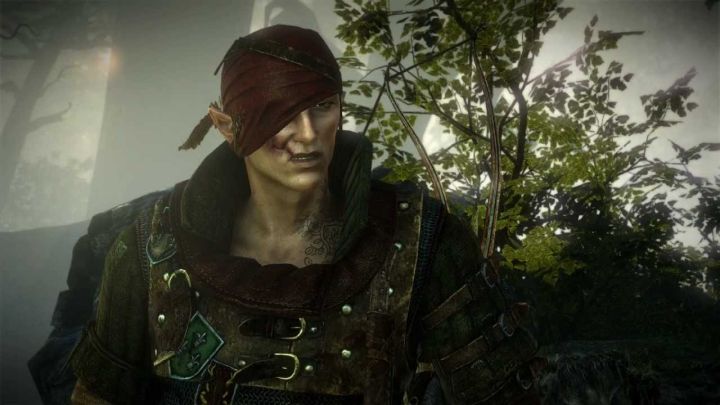
There’s a slightly different way of looking at the absence of save import from TW1 to TW3. Sasko admitted that such a possibility was considered at some point, but it entailed too many fundamental problems. First of all, the first iteration had been released many years before and only for PC. Second, the first game, although at the time of the release considered a success, did not reach a wider audience worldwide and truth be told, there weren’t many people that had played The Witcher before finishing Assassins of Kings (not to mention keeping saves from the first game for five years). Sasko even referred to that group as “impossibly small”. Bearing in mind the fact that adding a tool for importing saves from the first game into the third posed a considerable technological challenge, it is easy to understand the decision to abandon this idea. It gave the developers more control over the story as well.
But we have to admit that CDPR didn’t just cut and erase: by the same principle of maintaining control over the story, the devs also had to expand content, as exemplified by the Blood Baron arc – perhaps the most memorable series of quests in the whole game. The developers spent a lot of time trying to make sure the quests in general had the right depth to them. It was a way of trying to strike the happy medium – infusing the right undertones into the events and making sure the emotions resonated with the players.
“We sat down and said ‘OK, we have to keep everything that’s been written, but we also need to add something to make sure that every element gets enough exposure”, says Pawel Sasko. “Take the burning stable moment, for example. First you punch the Baron, then there’s the moment of confession at a bonfire. Initially, the whole sequence was much more concise, because we thought it will work better that way. As soon as we tried the first implementation it became obvious there’s a ton of things missing there, that there’s way too little exposition. So we really had to expand it. I remember that when playing the Baron mission for the first time, the game director, Konrad Tomaszkiewicz, told me the quest was too long… And yet from that moment on, with every evaluation, we would only add more content to it”.
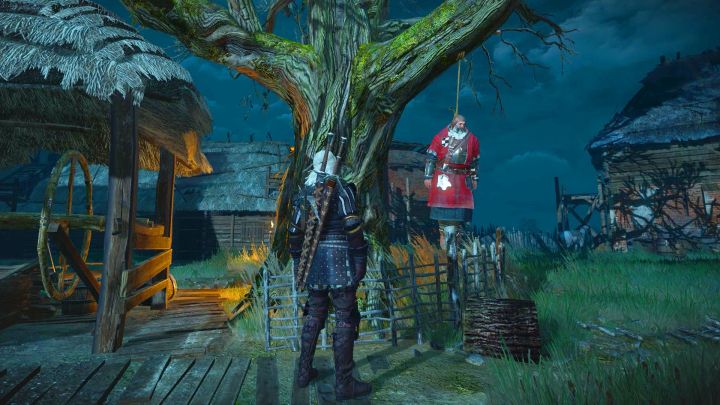
Geralt of Trivia
Discussing the Bloody Baron quests, we felt compelled to ask our interviewee about mature subjects in video games in general. After all, the events in the Crow’s Perch were rather dark, touching upon subjects such as domestic violence, rape, pregnancy termination etc. When asked about having any second thoughts about including such themes in The Witcher 3, Pawel Sasko’s answer was this:
“There was a great many doubts here and I remember discussing in the studio whether those themes should actually be featured in the game. But this is something that really intrigues me – doing something more. Our medium is knee-deep in a marsh of sorts because it kind of grew from the toy industry. This gives us a label, whether we want it or not, saying ‘it’s temporary stuff, it’s just a video game; not intriguing, not challenging’. So, bearing this in mind, of course it was difficult, since many people actually believe that opinion, while at the same time having a very limited notion of what should and shouldn’t be incorporated into our medium. For me it was fascinating to even tackle such a problem. But it was very difficult. ‘The Baron’ was re-written like a dozen times”.
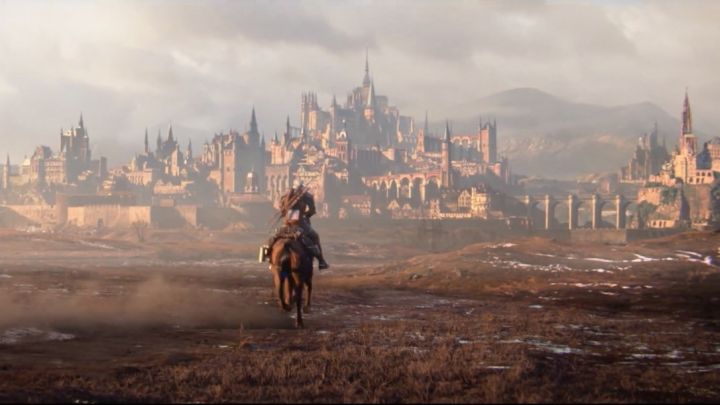
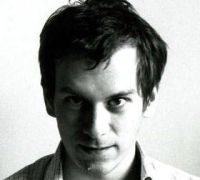
Blazej Augustynek – similarly to Pawel Sasko, he made his first steps in the industry in Reality Pump, although a couple years later. He joined CD Projekt RED in 2013 to work on quests for The Witcher 3. He mainly worked on side quests (since, as he himself says, it gives more creative freedom than the main thread), but he is also responsible for the general outline of the main storyline in the Blood and Wine expansion.
What other tidbits surfaced during our conversation with people from CDPR? We asked Pawel and Blazej about the puzzling presence of Toussaint in the release trailer for The Witcher 3 (entitled A Night to Remember). Their “testimonies” were a bit different, since none of them was able to provide a credible account of the order of events that the trailer was a product of. However, they both said that a visit to the fable-like duchy was certain at that point. Oddly enough, Blood and Wine was originally planned as the first expansion. Toussaint competed against locations such as Brokilon and Mahakam – CDPR opted against the two latter places since they bore too strong of a resemblance to places already featured in the series – the Flotsam forests and Vergen from Assassins of Kings, respectively.
Another discarded concept was a sidequest featuring queen Meve (queen of Lyria, the same one who knighted Geralt in the book Baptism of Fire). Unfortunately, there are not many details concerning herself or her appearance in the game, because the idea – courtesy of Augustynek himself – was dropped during early production stages. Well… we have to settle for the small reference to the whole Geralt-the-knight situation: during the tournament in Blood and Wine, one of the participants, prince Anseis, son of Meve in fact, reproaches Geralt for deserting from the queen’s army.
We also asked about Season of Storms (yet to be released in English) and the relatively small number of references to the latest entry in the paperback Witcher series by Sapkowski. Sasko explained that as soon as the book was released, the developers read it from cover to cover looking for additional inspiration, but it was too late for big changes at that point – at the end of 2013, when the Season was published, The Wild Hunt’s plot had already been carefully laid out. The expansions gave CDPR somewhat more liberty – hence the presence of the Borsodi Brothers' Auction House in Hearts of Stone.
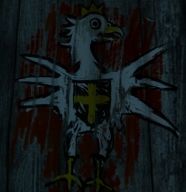
By the way: a couple weeks ago, we analyzed the apparent parallels between Redania and Poland that can be inferred on numerous occasions in The Witcher – both books and games. The conversation with Pawel Sasko was a great opportunity to shed some light on this matter – as it turns out, the team agreed that all those similarities are indeed too consistent to be a coincidence, and the idea was further explored in the game.
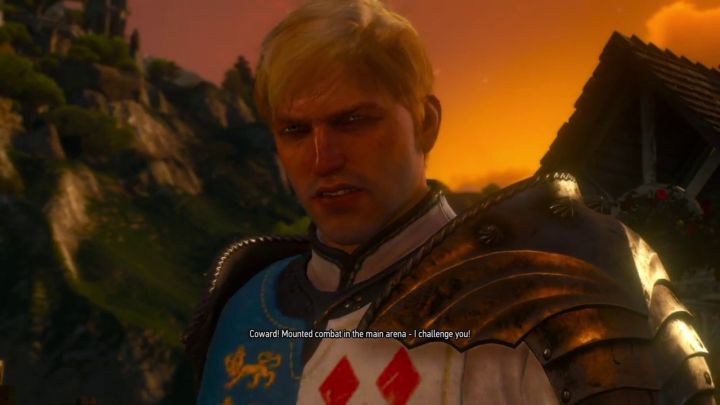
Something ends – a summary
Although the story wasn’t very long, it sheds more light on the amazing ride that CD Projekt RED experienced. They’ve only made three games, but the developers from Warsaw managed to accomplish more during a decade than some of the industry’s behemoths do in a quarter of a century – and they have done that in spite of starting with little to no experience, in spite of fickle technology and the challenging market. The story of CD Projekt RED is a great material for a book that beginner developers could read during moments of doubt on long winter nights. And I’m sure somebody will write that book sooner or later. Meanwhile, though, the story is still progressing – with Gwent just around the corner and Cyberpunk 2077 at the horizon, it ought to get even more amazing. I wish it would. I’m sure it will.
